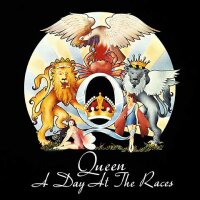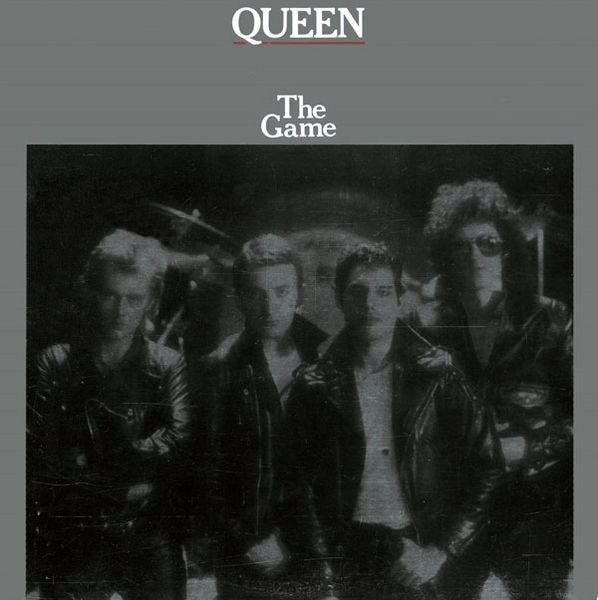02-07-1977 – A Day at the Races – Washington Post
Queen’s Deja Vu ‘At the Races’
When “A Night at the Opera,” released at about this time last year, turned into one of 1976’s most popular albums, the four musicians in Queen, who had been touring diligently for three years and doing all the other things you have to do to become fullfledged rock ‘n’ roll stars, had a tought decision to make. For their next effort they could either stick their necks out and try something new – or play it safe and deliver more of the same.
It takes only a glance at the cover of “A Day at the Races” to determine the choice they made. Like its predecessor, the fifth Queen album take its title from a Marx Brothers movie – a fact which Groucho Marx duly noted in a recent note to the group congratulating them on their good taste. What’s more, the album artwork is virtually identical to that of “A Night at the Opera,” with the color scheme merely being reversed. Musically, the situation is much the same. Just so the dimwitted won’t miss the point, “A Day at the Races” (Elektra 6E-101) begins with the clanging gong that ended “Bohemian Rhapsody,” the last song on “A Night at the Opera.” And once again, Queen, whcih will perform in concert Friday night at Cole Field House, has come up with a judicious blend of heavy metal rockers and classically influenced, almost operatic, torch songs.
It’s the oddness of this combination that prevents Queen from being lumped together with all the other third-generation English heavy metal bands. Though they’ve often been suggested as the group that will eventually end Led Zeppelin’s heavy metal supremacy – and on “Tie Your Mother Down” have even issued a challenge by mockingly mimicking one of Led Zeppelin’s most famous numbers – Queen draws almost equally on lush, McCartneyesque melodies and the traditions of the English dance hall.
Or at least Freddie Mercury, the group’s flamboyant 30-year-old lead singer, does. He tells Queen’s fans that his biggest influences are Paganini and Jimi Hendrix, and the songs he’s written for “A Day at the Races” seem to say he’s not kidding. There’s “The Millionaire Waltz,” an honest-to-goodness waltz that quotes Strauss; “Good Old-Fashioned Lover Boy,” a vaudevillian evocation of ’30s high living; and “You Take My Breath Away,” a romantic ballad more sentimental than anything Queen has ever recorded.
The hard-edged rock ‘n’ roll, on the other hand, comes mostly from lead guitarist Brian May, a 29-year-old whose official biography lists a physics degree from London’s Imperial College and graduate work in astronomy. He provides a necessary counterpoint to Mercury’s romanticism; one can sense him itching to break out and play brutal three-chord rock on “The Millionaire Waltz,” and on his own songs, he really lets loose.
Although it’s Mercury’s “Somebody to Love” that has emerged as the successful follow-up to the single hit “Bohemian Rhapsody,” the finest songs on “A Day at the Races” are probably May’s. The slide guitar-powered “White Man” can be dismissed on grounds of heavy-handed lyrics, but “Tie Your Mother Down” is a wonderful expression of teen-age heavy metal rebellion, and “Long Away” is an affectionate recreation of the mid-’60s Beatles/Byrds sound.
Still, the tension between the Mercury and May styles has become as predictable a part of Queen’s albums as the proud “No Synthesizers!” slogan that has appeared, in one form or another, in the small print on all five of the group’s albums. The multi-tracked vocal choir on “Somebody to Love” and the overdubbed guitar orchestra on “The Millionaire Waltz,” though an impressive display of how to use studio technology for your own ends, have been done before – most notably on last year’s elaborate “Bohemian Rhapsody.”
The only new departure here is “Teo Torriatte,” the album’s finale. The Beatles have sung in German and French, and Roxy Music in German, French, Italian and Latin, but never before has an English-speaking rock group attempted to sing a song in Japanese. Queen’s rendition of this May composition, which apparently translates as “Let Us Cling Together,” is a charming novelty – so don’t be surprised if it turns up again as the opening bars of next year’s “Duck Soup.”




